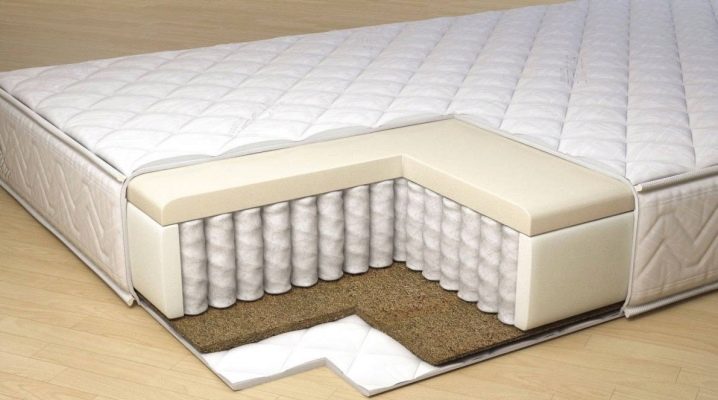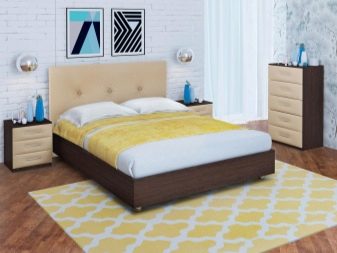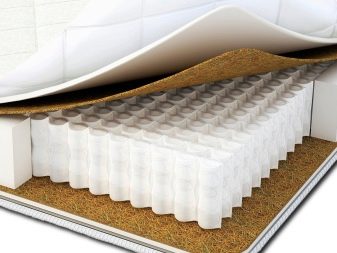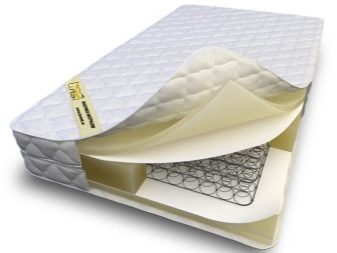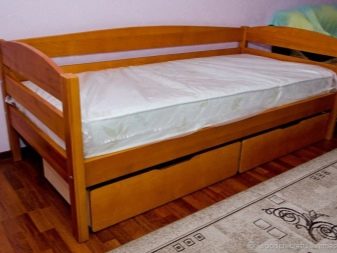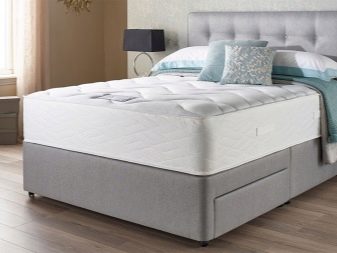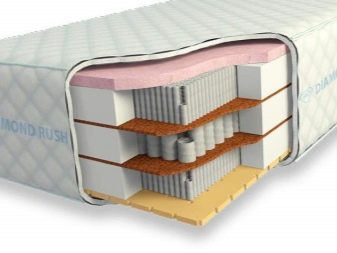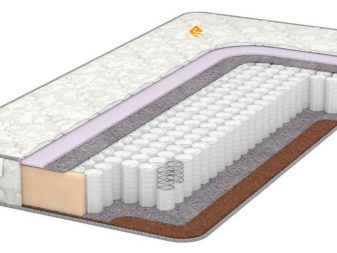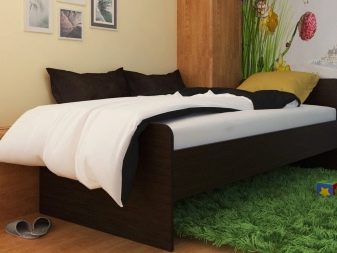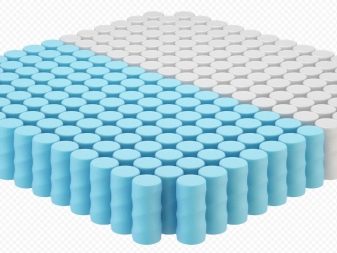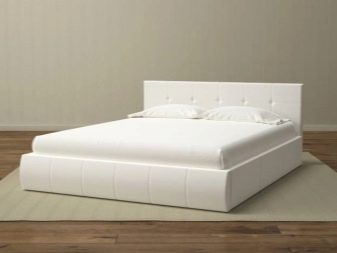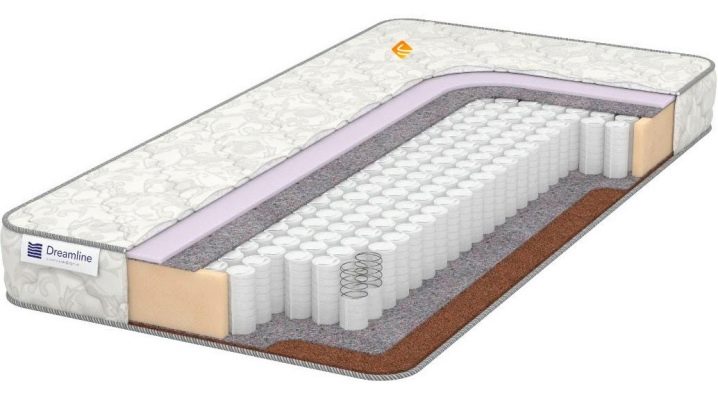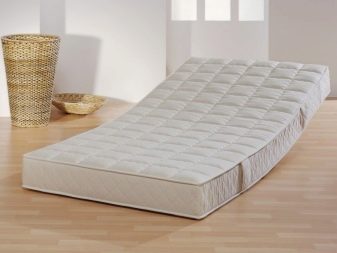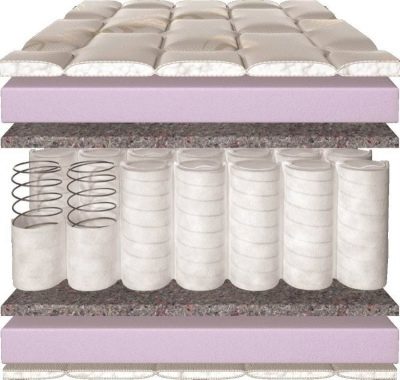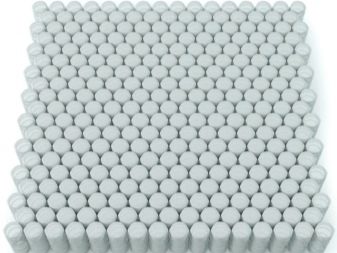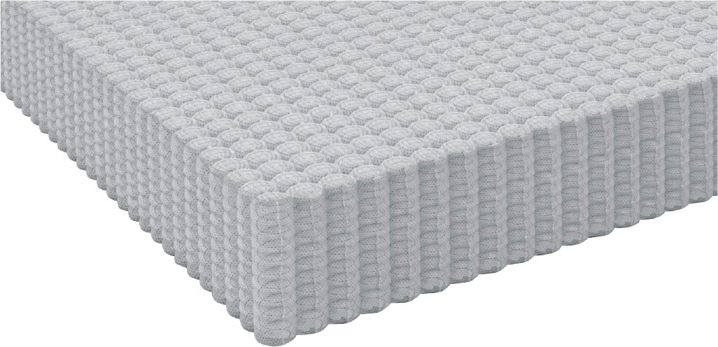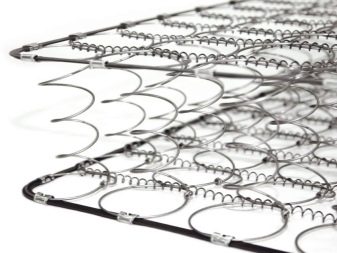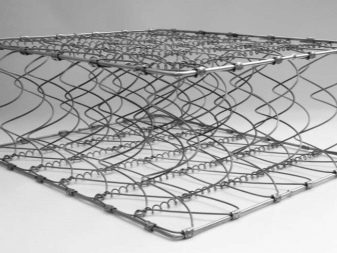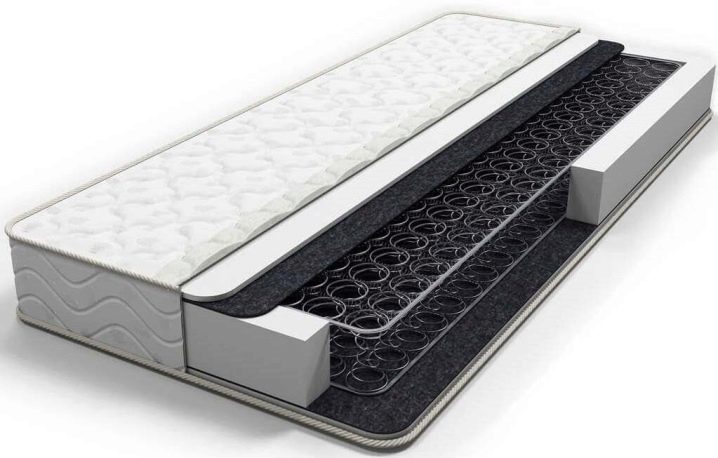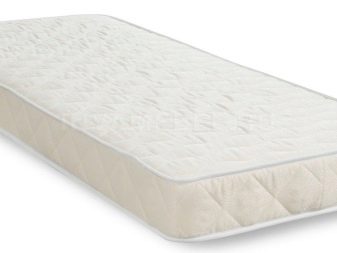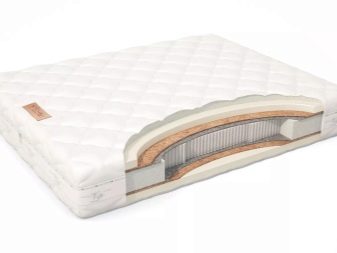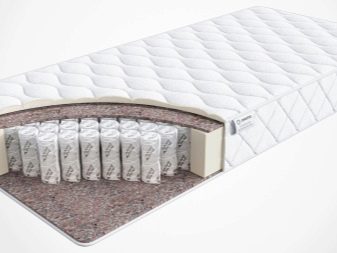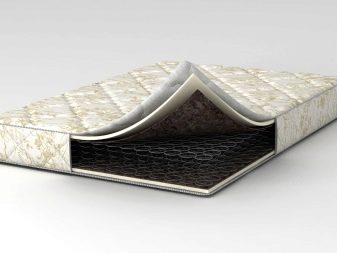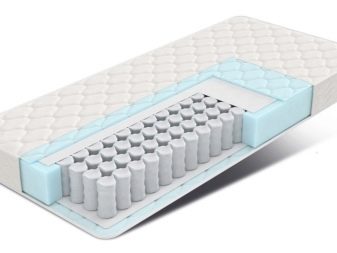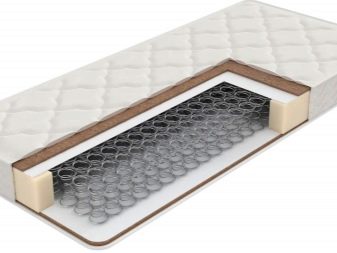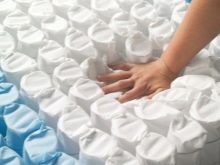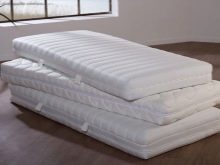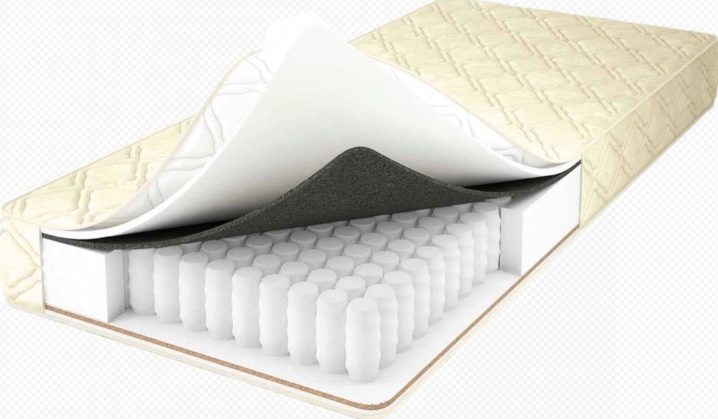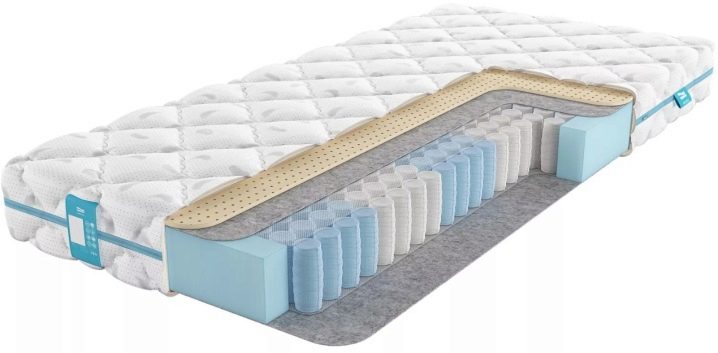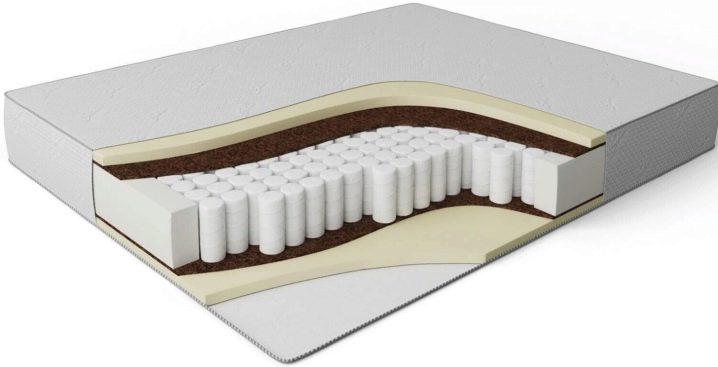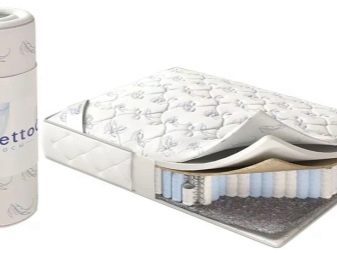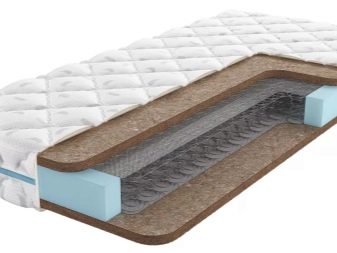What are spring mattresses and how to choose them?
Spring mattress - how to choose it? This question is asked by many people who want to take care of their own comfort while sleeping. It is really difficult to choose a high-quality base, because even orthopedic models are not always comfortable and durable. To understand how many springs should be in a good mattress, to understand what their number affects, a detailed overview of all the important aspects of such bedding will help.
Peculiarities
A spring mattress is a complex multicomponent structure placed in a cover. Outwardly, it looks like a solid block, but the content of different models may differ markedly. The basic description of the elements that make up a spring mattress looks like this.
- Outer cover. It can be removable or one-piece, sewn.
- Filler interlayers located on 1 or 2 sides of the mattress. They determine its rigidity.
- Spring block. It can be dependent or consist of separate elements in protective covers.
- All-round polyurethane sidewall. It is connected with glue to the upper and lower layers of the filler, forming a closed box.
For mattresses with a dependent spring block, the composition may differ slightly. Here, manufacturers often save on basic components, offering customers a rigid metal frame with insignificant interlayers of inserts on the front and back side.
More modern solutions are more complex and allow solving problems of orthopedic support for joints and spine.
The advantages of spring mattresses are quite obvious.
- Long service life. On average, at least 10 years.
- Wide choose. You can find an option for every budget and every need.
- Various base heights. Suitable for beds with high sides.
- Comfortable sleep. A wide range of degrees of softness allows even the most demanding people to find their own solution.
- Anatomical properties. The springs adapt to the position of the human body, provide the necessary support, and do not affect blood circulation.
There are also disadvantages. In the category of innerspring mattresses, there are no very rigid bases designed for the large weight of a sleeping person. In addition, the hollow base can collect dust, which can be a problem for allergy sufferers. The ingress of moisture also leads to problems - its evaporation is difficult, the metal can corrode.
What does the number of springs affect?
When it comes to models of mattresses with a spring block inside, of great importance when choosing such a base is the number of elements that compensate and distribute the load inside the bed. This indicator can be indicated based on the area of the product or, in general, on a sleeping place. Determine how many springs should be in a good mattress, based on the type of design, purpose, body weight of the future owner.
Among the factors influenced by this indicator are:
- the rigidity of the base for sleeping;
- resistance to constant loads;
- anatomy;
- orthopedic properties.
A properly mattress with enough springs will ensure an even distribution of the person's body weight. It literally "adjusts" to the individual characteristics of the owner.
Often in one mattress for 2 berths, the blocks have a different number of springs and orthopedic properties.This allows each person, even with a significant difference in height and weight, to feel comfortable during a night's rest.
Most often, we are talking about the number of springs when a choice is made between different blocks. It is worth comparing these indicators.
- TFK. A universal version of the spring block, in which there are 256 springs per 1 m2, and 540 springs per sleeping place. This option is suitable for people without overweight, children and adolescents, anatomical and orthopedic properties are poorly expressed.
- S1000. Here, there are 500 springs per 1 m2, and 1000 springs per berth. They themselves are thinner, in many models the gaps are also made smaller. Some manufacturers even give the filling of the mattress the look of a honeycomb. Such products have the ability to provide good support for the body during sleep.
- S2000. This mattress has 1000 springs per 1 m2 of area. There will be 2,000 of them in the entire sleeping area. Such mattresses are designed for a person's weight of 130-150 kg, they provide good support to the muscles and the spine, and are more resistant to wear and tear.
The more springs a mattress block contains, the better it does its job. But the price also rises, so when buying, you can compromise by taking inexpensive products with fewer such elements, if a sleeping place is being arranged for guests or periodic overnight stays in the country.
Overview of views by spring type
All produced spring mattresses are usually subdivided into groups according to the presence and type of filler, as well as other features of their design. Models with soft outer sides can be supplied in a roll, rigid ones with coconut coir and other natural fibers require transportation and storage only when unfolded. Orthopedic spring mattresses are aimed at people with certain problems with the spine or joints, they allow you to maintain an optimal body position during sleep. Options with different side stiffness are suitable for those who prefer to periodically vary the softness of the stock, having a choice.
With independent
Modern mattresses with a spring block are of an independent type of construction. Each supporting element in them is placed in a special cover that isolates it from others. This eliminates the hammock effect and guarantees an even distribution of the load. The springs are made of hardened steel, their diameter varies from 20 to 60 mm with up to 8 turns. The shape of each element is barrel-shaped or hourglass-shaped.
The classification of mattresses with an independent spring block implies a division into the following categories.
- Standard or TFK. Single six-coil springs with a diameter of 50-60 mm are used here. The density of such a structure reaches 220-300 mm per 1 m2.
- "Honeycomb". Also known as CopperCoil. The density of the springs is the highest for this category - 300 pieces per 1 m2.
- "Hourglass". This type of springs was developed by the company "Ascona", especially for increased loads. The diameter of the elements here reaches 60 mm, the bearing capacity of each is increased to 3.5 kg, the number of turns is 7.5.
- Multipocket. Anatomical spring blocks with a diameter of elements 20-40 mm and their density from 500 to 1000 per 1 m2. The small size of the springs provides good point support for the body.
- With a double block. Also known as DualSpring. The block consists of elements of the "spring in a spring" type, well suited for sleeping people with a large difference in body weight. The outer part has 256 elements, the inner part - 128. The hidden element works well under heavy loads.
- With zoning (Smart Spring). In them, different areas of the mattress are equipped with rigidity. There are many options for zoning - from 3 to 15. You can choose an option with the required level of support.
These are the main types of mattresses with independent springs on the market.
With addicts
This type of spring block is better known as bonnel. It is a structure of steel springs with a thickness of 1.2-2.2 mm interconnected by wire, each of which has 4 turns. They are installed in a row, connected by spiral elements. The shape of the spring is double-cone, diameter 60-100 mm. On average, there are from 100 to 150 such elements per 1 m2.
Dependent spring blocks are considered obsolete. They are used in mattresses of the most budgetary classes, as well as in cushions.
The main disadvantage is the cohesion of the springs. When one part is punched out, all other elements are deformed. In this case, there is no question of an orthopedic effect, and under significant loads, hardened steel springs can burst, making further operation of the product impossible.
Dimensions (edit)
All spring mattresses are divided into double and regular. There is also a division by the age of the user. For adults, options are available with the width of the berth:
- 80 cm - for single beds;
- 120 cm - for one and a half;
- 140-200 cm - for double beds.
The length of the structure varies from 190 to 200 cm for standard mattresses. Orthopedic models are often made square: 180x180 or 200x200 cm.The height depends on the type of block, usually ranging from 150 to 350 mm. Children's models are more compact. Their standard dimensions are 120x60 cm, 140x60 cm, 160x80 cm. The height of the product is 100-180 mm.
Manufacturers rating
Today in Russia, the production of modern spring mattresses is quite successfully carried out, and both cheap options and premium products can be found on the market. Top manufacturing companies will help you choose a trustworthy firm when buying.
- Ascona. Production is established in the Russian Federation, but the brand itself belongs to a foreign holding. The products are ECO certified and undergo rigorous quality control. The company has its own developments and patented innovations that buyers are willing to pay for. The price of mattresses - from budget to high, much depends on the thickness of the product, the type of springs.
- Ormatek. It accounts for about 20% of the spring mattress market. The company produces both inexpensive products with a bonnel unit and more high-tech options, including those designed for people with different body weights. The price range of products is budget and medium.
- Consul. Manufacturer of mattresses with European "registration". It is positioned as a brand for the elite, which significantly affects its popularity in Russia. The quality of the products corresponds to its level, but mattresses are 3-4 times more expensive than their Russian counterparts.
Nuances of choice
You need to be able to choose the right mattress for a bed for 1 or 2 people. There are several basic criteria that determine how comfortable sleep will be, and how convenient the product will be to use.
- Dimensional compliance. The optimal base length is 20 cm longer than a person's height. The minimum width is 80 cm for 1 berth.
- Workmanship. Unpleasant specific smell, synthetic filling, lack of safety certificate. All this is a reason to refuse a purchase. Also, crooked lines, any signs of deformation, spots on the cover, a strong creak of springs when punched should be alerted.
- Materials. If it is important to choose a hypoallergenic mattress, you need to pay attention to the type of filling. Natural materials can cause negative reactions more often than artificial ones. Porous - accumulates dust faster.
- Hygiene, ease of care. The design of the mattress must be water-permeable, the cover must be easily removable and washable.
- Comfort level. Hard bases are recommended only for young people under 25 years of age. The older the potential owner, the softer the bed should be.
Can the mattress be rolled up?
When storing and transporting sleeping accessories with springs inside, the question often arises of whether it is allowed to twist such a structure.Of course, the ability to roll up the mattress looks very attractive, because it saves space in the back of the car, home storage. But not all products tolerate such an effect well. The presence of a spring block is not the main problem here. Much more important is the type of filler used with it.
In order not to find after transportation or storage on a mattress twisted for a while, creases, damage to the strapping, ruptures of the lining, it is worth clarifying from the very beginning: what kind of material is inside. The following types of mattresses are suitable for folding.
- With PU foam filling. It is a lightweight, flexible, elastic material that quickly regains its former shape after compression.
- With artificial latex. It looks like dense foam. It tolerates deformation well, but it restores its shape a little longer than polyurethane foam. It is better not to twist mattresses with natural latex inside.
- With foam memory foam. This modern filler has a memory effect. It easily withstands even prolonged deformation, is lightweight, does not thicken the mattress too much.
All products with this type of filler in the composition can be rolled up.
But if the mattress is double-sided, with a hard insert, then such experiments will only lead to damage to an expensive item. Also, products with any natural fillers or a spring block height of more than 200 mm should not be rolled up.
How to twist correctly?
Even if the spring structure contains a soft material that tolerates deformation loads well, it is important to act correctly when storing it or preparing it for transport. It is better to twist the mattress together - this way the roll will turn out to be smoother. The procedure will be as follows.
- The upholstery is removable. Packed.
- The top layer of the mattress is spread out. It should be perfectly flat, without wrinkles.
- Folding starts from the narrow side. It is better to use additional elements - belts, straps for tightening, otherwise it will not be possible to roll the spring block into a sufficiently tight roll. Twisting is done inward, no more than 2 turns.
- As soon as the roll is rolled tightly enough, it is fixed.
For long-term storage or transportation, it is better to additionally place the mattress in a cover made of thick plastic wrap. It will protect the product from dirt and dust, excess moisture. You can store the product in such packaging for no longer than 12 months. It is necessary to transport the roll on a firm horizontal base, in a prone position.
